Fireworks are transformative.
Undoubtedly, there is the obvious physical and chemical transformation of a colorful and tightly packaged explosive into an often radiant, loud, and enchanting spectacle. However, for some people like Sal Giudice, the transformation is more profound.
“For me, as with many others, the transformation of a fun-loving kid into a full-blooded patriot, started with fireworks on the Fourth of July,” states Giudice. Each year he partners with his son to present a fireworks display for their Fourth of July celebration each year.
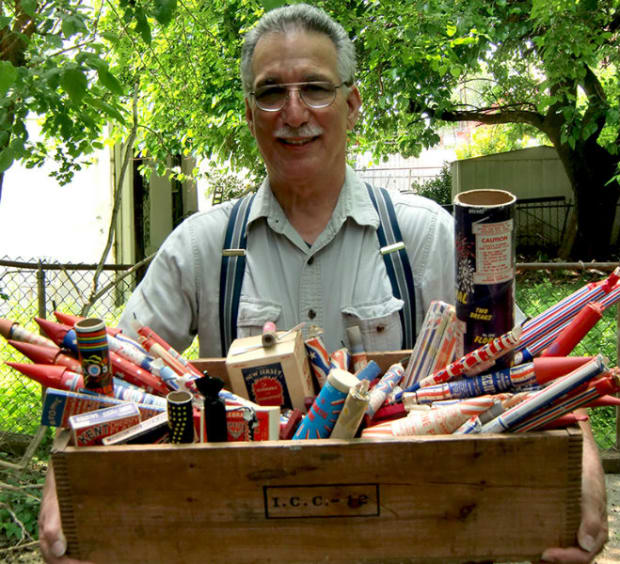
Image courtesy of Sal Giudice
Approaching Fireworks With Wide-Eyed Wonder
With this as the cornerstone, it’s easy to understand how they have captivated and entertained this East Coast fireworks enthusiast for more than five decades. It was a bit like love at first sight, Giudice explains. At the age of six he truly experienced a Fourth of July celebration with a glorious display of fireworks.
“I can still recall those great noisy days,” he adds. “Back then, and even now, a rainy day on the Fourth of July was considered a curse. It could rain 364 days out of the year, just not on the Fourth.”
About 30 years ago Giudice’s great appreciation for fireworks, which includes shooting off fireworks, also became the subject of his collecting efforts. It’s an effort that is as much nostalgic adventure and enjoyable historical study, as it is a process of acquisition.
“People ask why I still shoot fireworks and why I collect them. I give the same answer to both: ‘As you go through your life you need to hold on to something that brings back memories of the things you enjoyed in less complicated times,’” states Giudice.
“Collecting over the years was my way of holding onto that part of my life.”
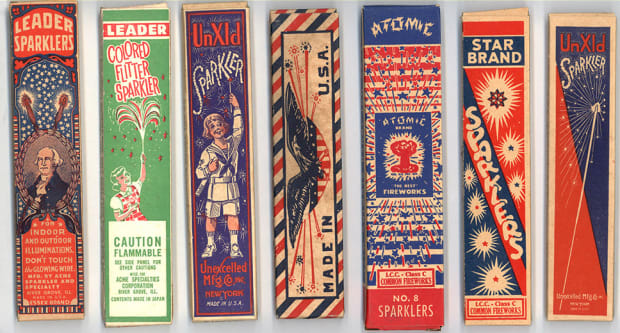
Image courtesy Sal Giudice
Honoring America’s Fireworks History
In his two-plus decades of collecting, he’s amassed a collection that numbers in the thousands. The largest part of the collection is represented by American-made common Class C fireworks. These types of fireworks are no longer produced. The last of the American fireworks manufacturers went out of business sometime in the mid-to-late 20th century, according to Giudice. The business of firework production is nearly a sole commodity of Asia; which is the place where fireworks began.
“Gone are the days of the Tristate Silverjets, Kent skyrockets, Zenith buzz bombs, Longhorn roman candles, Acme sparklers and Miller M80s and cherry bombs,” he adds. “Those are the type of items that I try to collect.”
Appreciation Requires Lawful Awareness
The last time Giudice added a vintage Class C firework to his collection was in 2015. However, he’s always on the lookout. Being aware of the laws concerning Class C fireworks is the other thing Giudice always keeps in mind. It’s also a key piece of advice he offers to others looking to collect Pyrobilia (live fireworks). Some fireworks are illegal nationwide, he explains. Certain models may require a BATF license to handle and store, while many others are regulated by each state. The moral of the story is to know the laws, and live by the laws, or suffer the consequences. As Giudice notes, violating state and local laws could results in confiscation of fireworks. This is the case no matter what their value may be. Or, whether they are a collection and not something to be sold or set off.
With that being the case, it’s good for Giudice and other collectors there are other fireworks and firework related memorabilia on which to base a collection. Welcome to the arena of sparklers, firecracker labels, catalogs, advertisements, and empty original firework boxes, among other things.
Expanding the Scope of A Collection
For Giudice the “other things” category includes comic books. “I go further than most fireworks collectors. I also look for comic books (Golden and Silver Age only) that have fireworks on the cover. Plus, mail order fireworks advertisement inside,” he states. “The firework ads were common in the Golden Age comic books, especially in the July issues. Until they were prohibited in the early fifties by the newly established Comics Code Authority. This pressured comics not only on content but also on the items they could advertise. Of course in that fireworks were banned.”
Another robust segment of Giudice’s collection is American-made sparklers. It was during the course of an online auction involving a unique box of Batman sparklers that he gained one of the most valuable pieces of collecting wisdom: Bid or buy (when you can) right when you see something that is unique and most appealing to you, because waiting can mean going without. Many years ago, while perusing auctions on eBay, Giudice came across a single box of Batman sparklers. It was something he had never seen before. The image on the box appeared to be the Batman image of the mid-1960s. It left Giudice wondering if it might have been a copyright violation, having not come across one like it in his firework catalogs.
While he did bid on the item, he was outbid when someone paid $70 for it. At the time he thought that was a high price. Since then, he’s changed his mind a bit about the price, as he’s never seen another, and he’s been looking for decades.
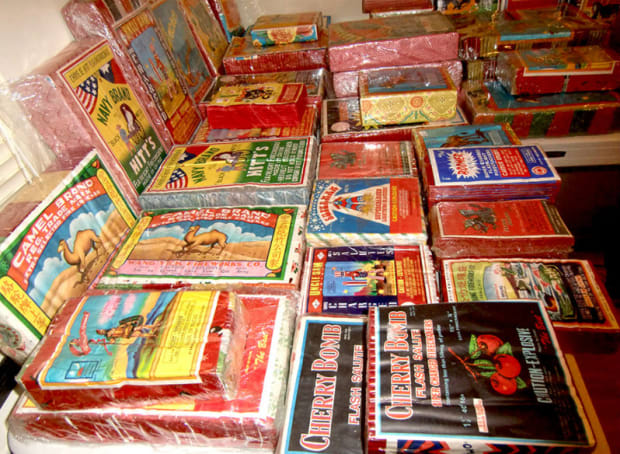
Image courtesy of Sal Giudice
Finding Favor With Firecrackers
Of course one category of vintage firework that needn’t require a lot of searching are firecrackers. It’s reported that firecrackers were invented in 10th century China, not necessarily for entertainment, but to ward off evil spirits. In the centuries since, countries in Asia have continued the tradition of firecracker production, evolving the process with advances in technology and innovative techniques. For Giudice, the inclusion of firecrackers made in China (prior to 1976), as well as examples from the short-lived period of American firecracker production, in his mostly American-made collection of fireworks, is part of staying true to the focus of his collecting efforts.
“I collect them because I consider them an integral part of the Fourth of July celebration,” he says.
As it turns out, he states, the most valuable item in his collection is a sealed brick. It contains 80 packs of 20 firecrackers each of Navy brand firecrackers. They date to 1928, and were produced by the Hitt Fireworks Company.
Lessons Learned From Firework Production
The company, according to The Book of Great American Firecrackers, invented the popular flashlight firecracker, known as Flashcraka. Recently, Giudice reports a brick of Navy brand firecrackers sold for $1,500, which makes this one of his best investments to date. Just like most collectors, realizing an investment was sound and may produce nice returns is a bit like fuel to a fire. Giudice understands that concept. Although the United States’ initial foray into firecracker production, courtesy of Mr. Gerhard who opened a firecracker plant in Greenville, New Jersey, in 1894, was short-lived, there were firecrackers produced by the plant. According to reports, Gerhard’s firecracker operation involving sixty workers could have produced as many as 50,000 firecrackers in a single day, Giudice says.
Although this was half as much as China-based operations were producing in a day, with fewer workers at a lower cost of labor, the idea of finding and being able to acquire a firecracker from Gerhard’s plant is a dream of Giudice’s.
“There must be one out of there somewhere. I would love to get my hands on one,” he says. “Since I have never seen or heard of anyone possessing one, it just might be the holy grail of firecracker collectibles.”
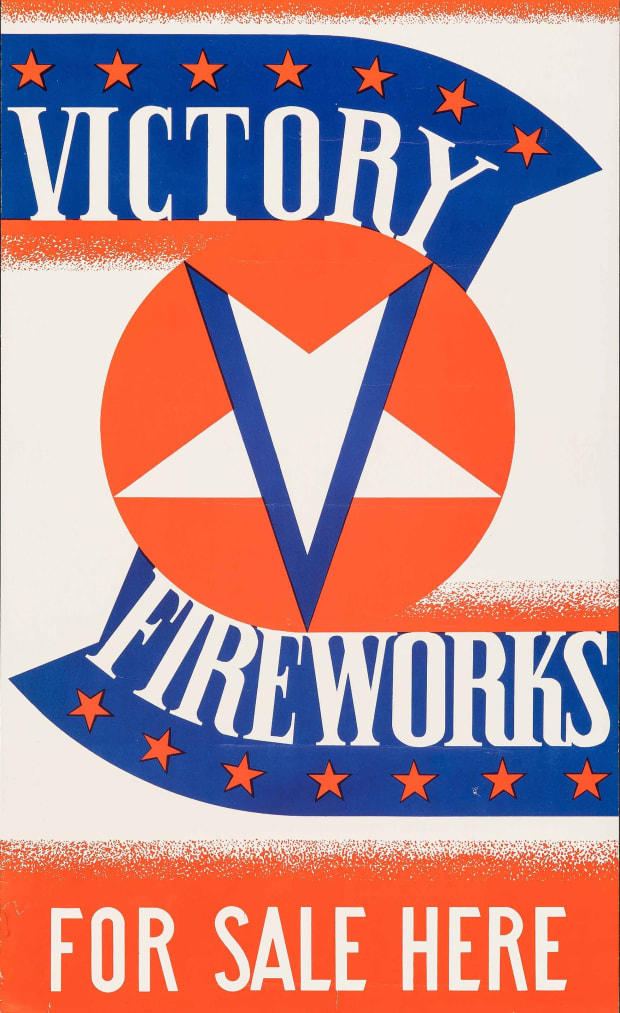
Image courtesy of Heritage Auctions
Sal’s Tips for Starting a Firework Collection
Before you begin wondering if vintage fireworks and memorabilia are within your collecting budget, or you begin dreaming about setting forth on an excursion in search of this potential ‘holy grail,’ Giudice shares some of his collecting tips: Fireworks catalogs, labels, and firework boxes are a great place to start, he says. Catalogs in very good to fine condition, produced prior to WWII through the mid-1950s command the highest prices, he adds. The average price, based on condition, is $50 to about $200.
Of the catalogs that consistently garner attention, those of the Unexcelled Fireworks Co. (logo was spelled UNXLED) are among the most rare and often realize top dollar of $100 to $200, Giudice reports. Less rare, but known for its presentation (including occasional use of color pages) are catalogs from Spencer Fireworks of Ohio. Spencer catalogs often command between $60 and $130. Catalogs used from 1940 through 1945 may command higher prices, largely because of rarity — caused largely by wartime paper drives. Labels separated from the firecrackers have a more broad range, with some available for less than $10 all the way up to $500, with Class 1 (early 1900s) selling for the most, Giudice states.
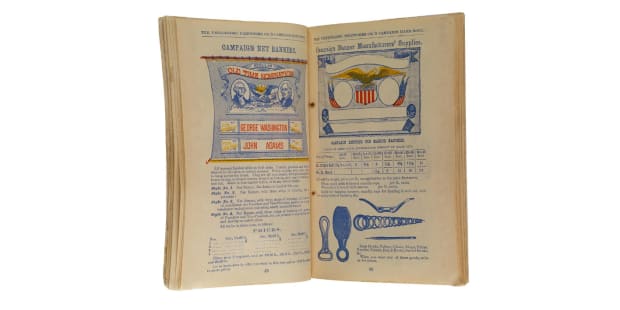
National Museum of American History
Safe Start: Vintage Firework Boxes
Empty vintage firework boxes also provide fodder for starting or enhancing a collection. They may be labeled as holding salutes — as they were referred to in some fireworks catalogs — including Cherry Bombs, Globe Torpedoes, M80s and Super Bulldogs, among others. These boxes can range from $50 to $500, and is a collecting arena sometimes ripe with reproductions being sold as authentic items, Giudice warns.
“Original real boxes were manufactured prior to 1965 and most will obviously show their age (like most of us),” he says. “The box will likely have discoloring, small tears and ripped flaps. Aging is hard to fake, and if it looks like it’s in very fine to mint condition, it’s most likely fake.”
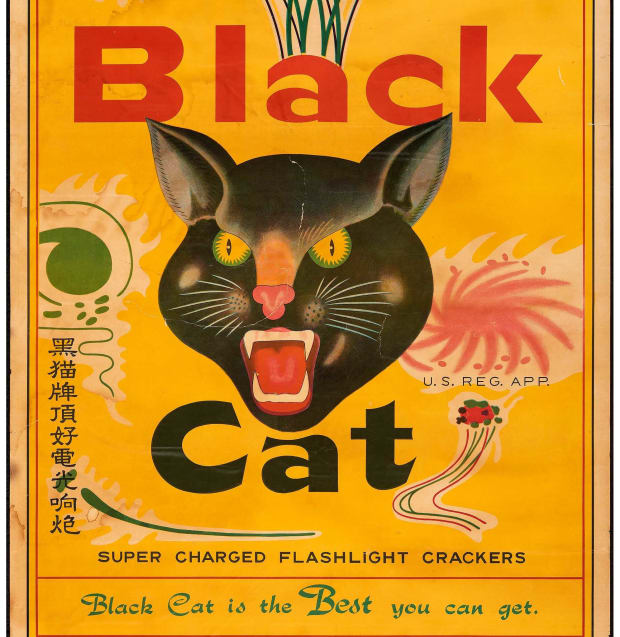
Image courtesy Heritage Auctions
Get Out of It What You Put In
As with any venture, collecting vintage fireworks is largely based on what you put into it. Committing to learning about the history and the evolution of production, adhering to laws and regulations, respecting the experiences and offerings of people you buy from, and being mindful of what brought you to this collecting interest to begin with, is part of what goes into a positive experience.
“At some point back when I was young man, maybe 12 or 13 years old, I became curious as to why we were setting the night sky ablaze with skyrockets, and roman candles? Why were we making such a racket all day long?”
“Of course, as a kid you love the fireworks for the energy and excitement of the celebration. But eventually you find out why we celebrate and you love the Fourth of July all that much more.”
Here’s to all of us enjoying similar transformative experiences through collecting.
Fireworks are loved around the world, as evidenced by this amazing Japanese show featuring huge shells.









